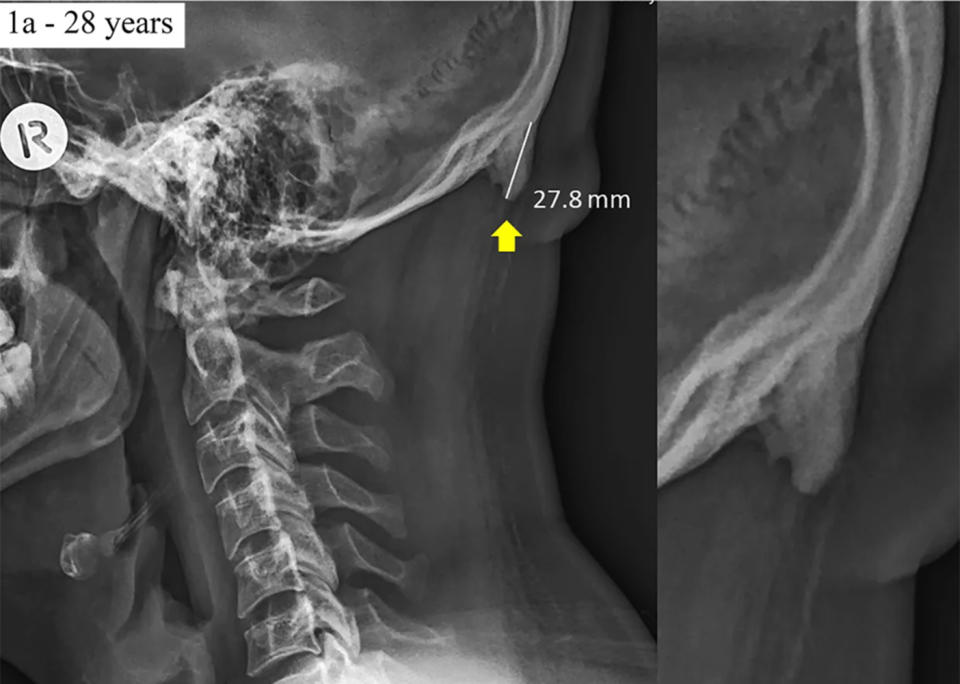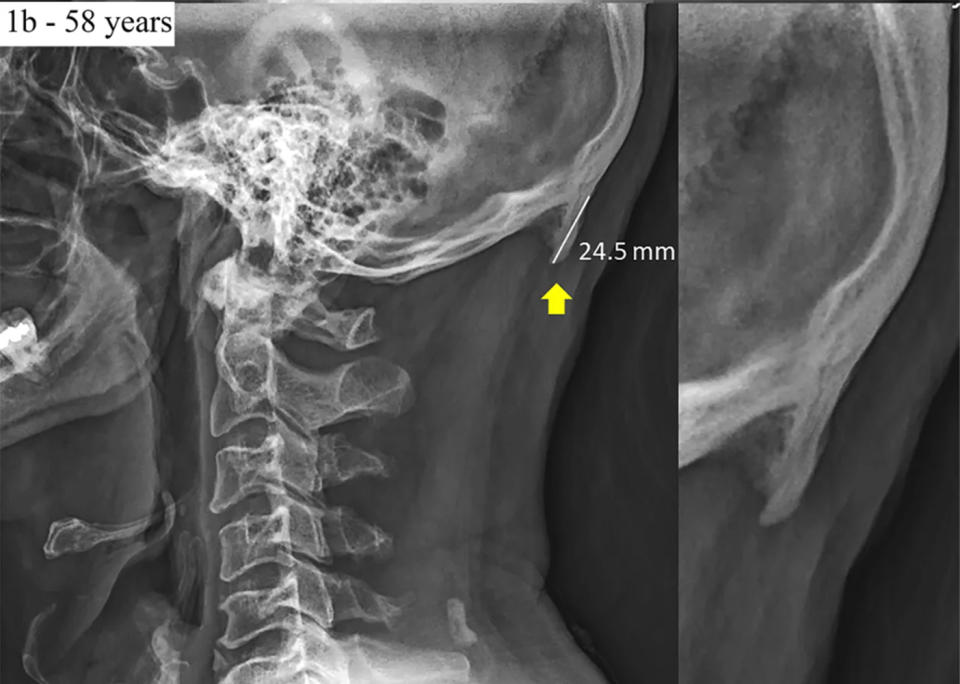How teens hunched over phones are growing horns on the back of their heads
Extensive smartphone use is contributing to young adults growing horn-like structures on the back of their heads, a new study has found.
The horn-like growths on human skulls were considered to be a rare occurrence when they were first discovered in the 1800s, but Australian researchers now say the bizarre condition is becoming common in young people.
The bony spikes were typically associated with hunched-over aging people, following years of poor posture, but now the condition is present in almost half of the 18-30 year-olds studied.

Dr David Shahar and Associate Professor Mark Sayers at The University of the Sunshine Coast found 40 per cent of those studied had developed the “bony outgrowths” on the back of their skulls, as a result of “forward head protraction”.
The scientists believe the 10–31 mm growths are a result of prolonged use of hand-held gadgets, with people spending too much time looking down at smartphones and tablets.

The spike-like growth, scientifically known as the “external occipital protuberance” is found at the lower back of the skull, just above the neck, Dr Shahar told BBC.
As we hunch over hand-hold gadgets, we crane our necks to hold our heads forward in an unnatural position, to support the weight of about 4.5kg, he explained.

The researchers say the growths are so prominent that anyone with the phenomenon may be able to feel the bony lump on the back of their head with their fingers.
Do you have a story tip? Email: newsroomau@yahoonews.com.
You can also follow us on Facebook, download the Yahoo News app from iTunes or Google Play and stay up to date with the latest news with Yahoo’s daily newsletter. Sign up here.


